THE CITY OF WONDERS
A Souvenir of the World’s Fair.
BY
MARY CATHERINE CROWLEY
CHAPTER 9. WONDERS OF THE DEEP
[For other installments of our serialization of The City of Wonders (1894), see the Table of Contents]
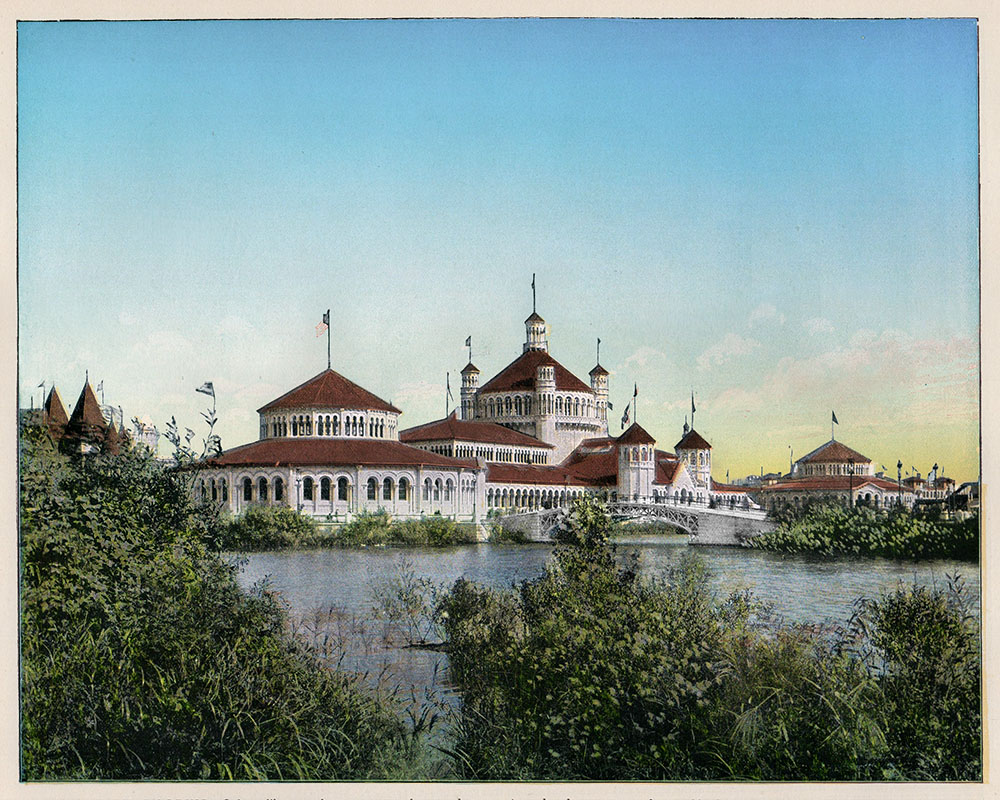
The Fisheries Building of the 1893 World’s Columbian Exposition, designed by Henry Ives Cobb of Chicago. [Image from Picturesque World’s Fair. W.B. Conkey, 1894.]
They advanced to a great curved corridor, behind whose crystal walls was a sea of green water, in which many kinds of fish were swimming about. In the middle of the Rotunda was an immense pool, from which rose a mass of rocks covered with mosses and lichens; and from between the crevices of the stones gushed forth bright streams, that fell sparkling amid the tangle of reeds and river plants below. There were fish in the pool also. Aleck and his sisters progressed slowly in the corridor, pausing at every few steps to read the names over the tanks, and watch the finny inhabitants.
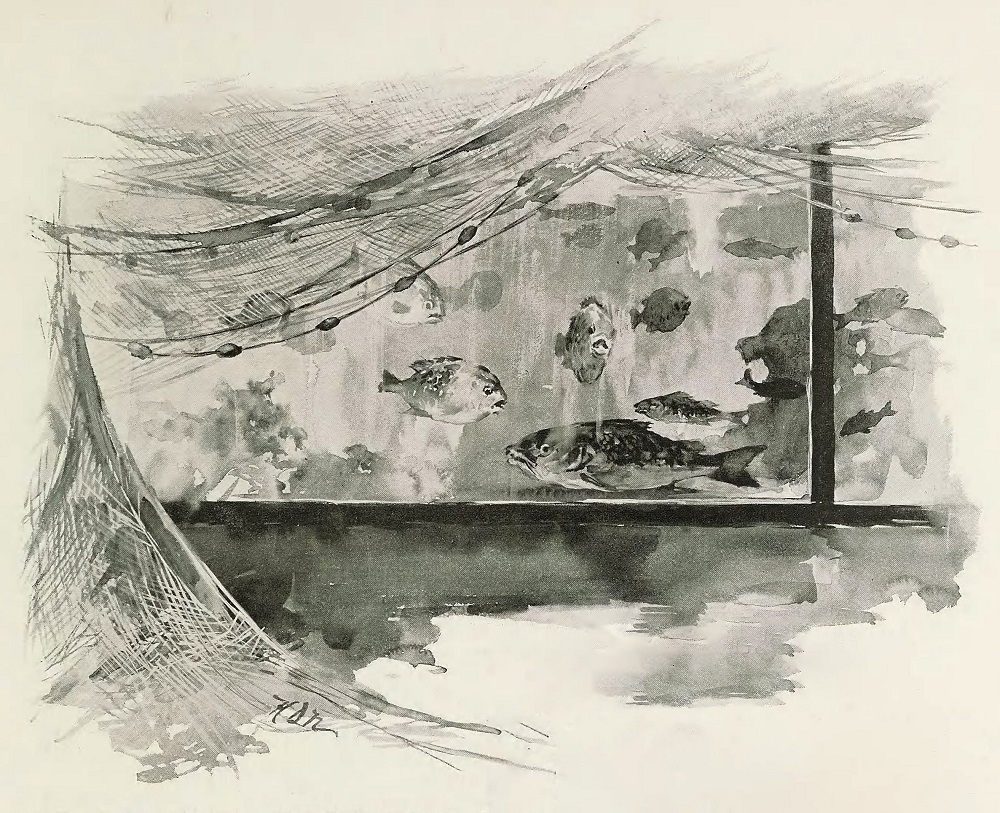
Displays of live fish in the Fisheries Building. [Image from Bancroft, Hubert Howe The Book of the Fair. The Bancroft Company, 1893.]
“Here is a dogfish!” cried Aleck. “Well it’s head does look something like a dog’s. And thereis another called the red horse.”
“Because its dorsal fin has the appearance of a horse’s mane,” explained Uncle Jack. “I want you to admire that black bass, and these pretty golden perch.”
“Oh, look at these calico-bass, broad and spotted like a piece of calico!” laughed Ellen. “But what are those many-tinted fish just beyond?”
“Rainbow-trout. Are they not beautiful?” called Nora, who was ahead.
They lingered a few moments at this section, and then went on to see the slender garfish, with bills like those of birds, but much elongated.
“These are known as the long-nosed gars,” said Mr. Barrett.
“Ho-ho!” laughed Aleck. “Here are fish with whiskers!”
They were bullheads, ugly fellows, with long beards. Not far away were blue sunfish, and others with brilliant red and blue spots in their hideous eyes; and some red-mouthed buffalo-fish.
“What makes that golden light farther along?” asked Ellen, looking down the corridor. “Is the sun shining in there?”
“You will soon see,” replied. her uncle, with a smile.
The roof and walls about the place she indicated were lit up with a brightness which one could not fail to notice at once upon entering that part of the building. As our party approached, they perceived, however, that this was not due to a gleam of sunshine, but proceeded from a tank where perhaps twenty fish, of a pink-gold color, were glancing to and fro, just beneath the surface of the water.
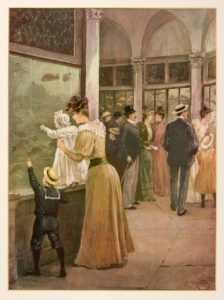
Fish tanks in the Fisheries Building. [Image from Bancroft, Hubert Howe The Book of the Fair. The Bancroft Company, 1893.]
“They are of the species known as the golden ide,” said Uncle Jack.
Some distance beyond were the ordinary goldfish, the fan or double-tailed variety, and the silverfish, with red-gold spots on fins and tail.
“It appears as if we might discover representatives of all the land animals if we searched long enough,” observed Mr. Barrett: “What would you call his finship here?”
“A catfish,” surmised Aleck. “He sports a whisker too, only it is a mustache similar to that of his feline majesty who treats us to moonlight serenades from the garden wall at home.”
“If it has the least bit of the nature of a cat, this sea-robin ought to be glad that there are walls of glass between them,” said Ellen. “Did you ever know there were bird fishes?”
“Not unless flying fish could be called so,” answered her brother.
“But is not this robin pretty,” cried Nora, “with its broad fins like wings, green-colored, tipped with gold; its red breast and greyish scales turning to silver, and soft tints like a beautiful plumage? It is very well named, I think.”
“How do you like this map-turtle?” inquired Uncle Jack, pointing to a tank, where a gay scion of the tortoise family was disporting himself, by kicking up mud and making life generally lively for his household.
“Well, well!” rejoined Aleck, watching his antics. “I have heard of a walking encyclopaedia, but I never expected to see a gymnastic geography. Is that the eastern or the western continent he is carrying around on his back? He surely ought to have paid Columbus the compliment of wearing a picture of America to the Exposition.”
“Aleck, don’t be so absurd, please!” protested Nora.
“The lines on his shell do resemble a map,” Ellen said, reflectively, paying no heed to this merry nonsense.
“Who is this fellow that evidently insists upon having a house to himself?” continued her brother.
“The hermit-crab,” replied Mr. Barrett. “He is just the reverse of his sociable brother, the fiddler-crab.”
“Oh, let us see the fiddle! “ cried the girls, pressing up to the case to get a better view of the tiny, droll musician, one of whose foreclaws was furnished with an enlarged appendage, which he sawed with the slender corresponding claw, somewhat as a violinist bows his instrument.
“These spider-crabs are no doubt capital dancers,” began Nora; “and that blue crab has come to the party too. He seems to be most interested in the supper, though. See how he feeds himself, holding his food in his long, finger-like claws, and nibbling quite politely. He appears to be enjoying the feast. And see this great horseshoe-crab. Ah, sir, you arrive very late! How he comes mincing and bobbing along, carrying his shell as if it were an umbrella a trifle too clumsy for him to manage.”
“Probably that burr-fish next door was not invited to the entertainment; he has hardly the characteristics of a social favorite,” said Uncle Jack, entering into her humor.
”Cricky! he bristles like a porcupine,” concurred Aleck. “See his striped green and grey scales, and his large blue eyes, like the spots of a peacock’s tail!”
“Ugh! What an ugly thing that toad-fish is!” said Ellen.
“It is just a large toad with a fish’s tail,” affirmed Nora: “But gracious, look at those swellfish over there! See them puff themselves up like little balloons, and then flatten out like pancakes.”
Uncle Jack now summoned them to watch a filefish, so called from the resemblance of its dorsal fin to a file.
“Are not they curious?” said Ellen. “Such odious creatures, nearly all head, with great, staring eyes an inch in diameter.”
“Do you want to see a real live shark?” asked Aleck, excitedly, coming back from a section to which he had wandered.
“Of course,—where?” responded his sisters following him.
“That a shark?” questioned Nora, as he pointed it out. “But what a small one! I thought they were immense things.”
“You refer to the man-eating sharks, which sometimes grow to the length of twenty-five or thirty feet and are indeed formidable enemies of those who go down to the sea in ships,” said Uncle Jack. “This belongs to a smaller species.”
“Look at the two little ones with the shark,” said Aleck.
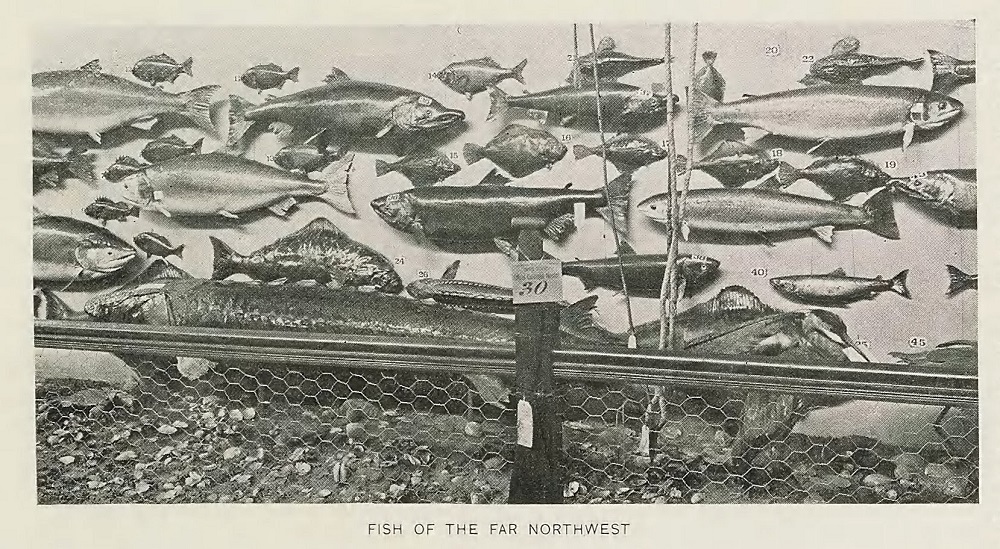
Fish on display in the Fisheries Building. [Image from Bancroft, Hubert Howe The Book of the Fair. The Bancroft Company, 1893.]
“Vegetables!” echoed Nora. “How very funny! Yet here is something yellow, which one might imagine to be a marrow-squash.”
“Oh, the flowers!” exclaimed Ellen. “Who would suppose all this loveliness grew in the depths of the sea?”
“These sea-anemones appear more remarkable still when we remember that they are living flowers,” added Uncle Jack.
“They are superb,” said Nora. “Especially the flame-colored ones, and those others that look like splendid chrysanthemums, with greenish cream and pink-tinted petals; and these feathery white ones like thistle-down.”
“What fine sea-ferns, too!” went on Aleck. “I’d be satisfied to start an aquarium with one of them.”
The young people delayed long before this anemone grotto, one of the most captivating corners in the Exposition buildings. Here glowed every variety of brilliant coloring. Beryl and emerald tints alternating with brown, and rich purples brightening into reds, violets and blues. Rosy or peach-colored films covered the dark plants; to and fro waved the yellow and azure fans of the gorgons, richly wrought like jewels in filigree. To the sand clung sea-stars of many hues; and screens of white coral, resembling carved ivory, revealed through their lacy lattices, new charms beyond. Cactus-like plants, adorned with bright blossoms, stretched forth their long arms toward the beauty by which they were surrounded; while small gleaming fishes darted hither and thither-the humming-birds of ocean,—some glittering with a metallic splendor of sapphire or vermilion, others of gilded green or dazzling silver.
All this wondrous life lay before them in the midst of the limpid sea-green waters, as if they had been transported to an ocean cave.
“It is too bad to tear you away from this novel world, fairer than fairyland because it is all real,” sighed Uncle Jack at last. “But it is growing late, and we must be getting on.”
They passed into the annex therefore, to view the exhibit of the great fishing industries of the world. Here were full-sized representations of the fur seal and walrus fisheries on the coast of Alaska, the animals and men being modelled in clay. A smaller one portrayed a seal “drive,” and showed a great number of seals, which the natives were driving in by waving cloths and shouting.
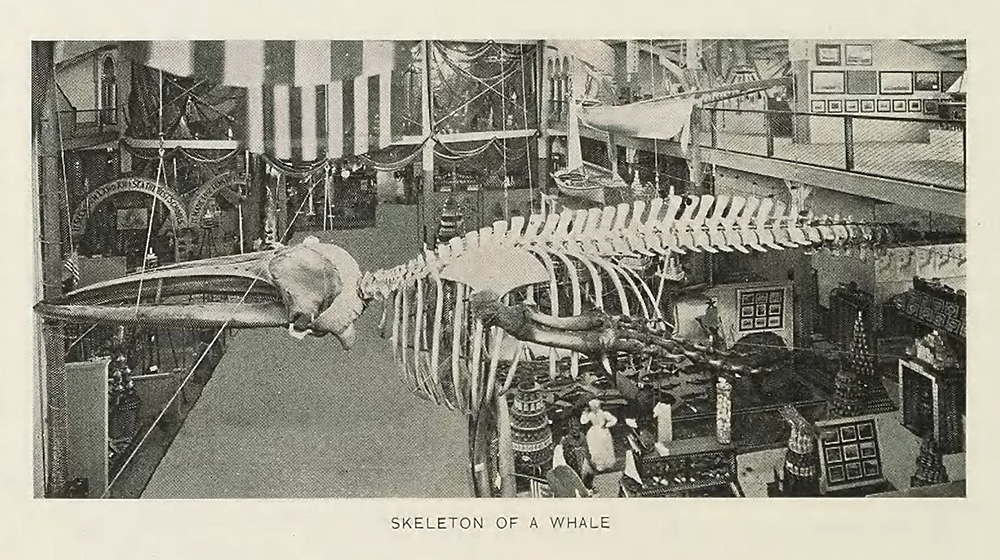
A whale skeleton on display in the Fisheries Building. [Image from Bancroft, Hubert Howe The Book of the Fair. The Bancroft Company, 1893.]
Ellen paused before a great bone, evidently a fragment of some giant skeleton.
“What is this? “she asked.
“A whale’s ear,” said Mr. Barrett, discovering the label.
“Goodness me! With such an ear I should think the monster could hear the ships coming after him away across the ocean,” she declared.
Here, also, were models of pleasure crafts and small boats of all kinds; non-capsizable boats with colored fan sails, beautiful long, narrow row-boats, racing shells, folding boats of canvas, and bark-canoes from Brazil; besides beach tents and cots, shooting and fishing-tackle, and everything that might contribute to the comforts of a summer camp by woodland stream or sea.
Uncle Jack now turned to the exhibit of fishery products, directing the attention of his nieces to some live diamond-back terrapin from North Carolina.
“Pshaw! nothing but turtles,” demurred Nora in disappointment.
“Turtles indeed,” he replied; but the costliest delicacies our epicures can enjoy, rivalling the viands served at the feasts of that extravagant old dinner-giver, Lucullus.”
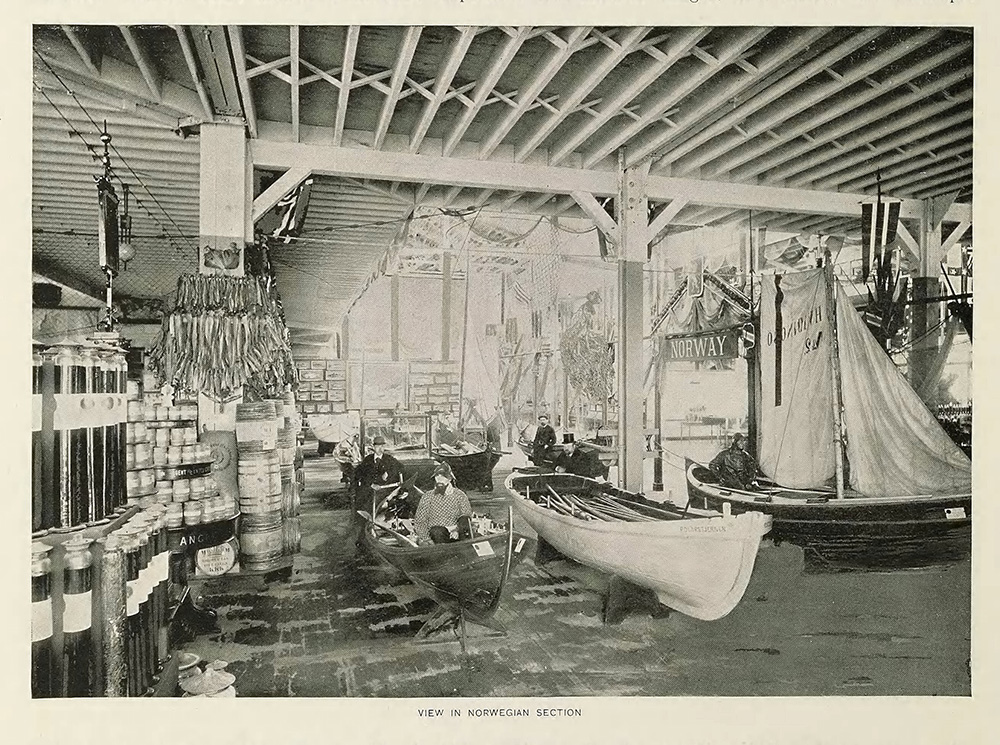
The Norwegian section of Fisheries. [Image from Bancroft, Hubert Howe The Book of the Fair. The Bancroft Company, 1893.]
Aleck avowed that this display of good things made him hungry; it was too prosaic to please the girls, who wandered off, and discovered, among countless jars of fish, a sealed vase containing two or three beautiful sea-lilies gathered off the coast of Havana.
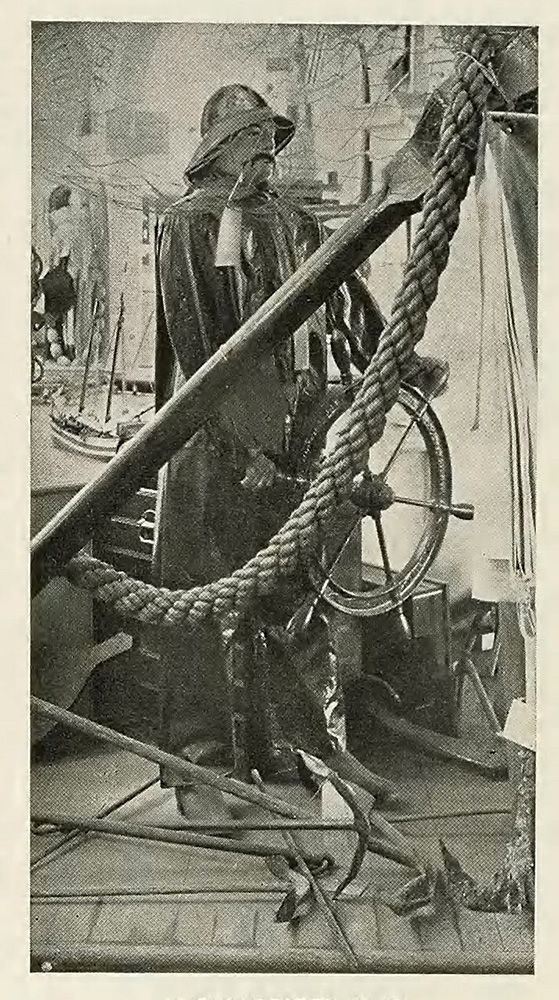
Exhibits in the Fisheries Building about the fisheries industry. [Image from Bancroft, Hubert Howe The Book of the Fair. The Bancroft Company, 1893.]
“The school is the first of the kind in any country,” said be. “It has been of untold benefit to the people of the vicinity; raising them from extreme poverty by giving them a means of earning a livelihood, and thus making them happy, hopeful and contented. And this was the work of their good pastor, Father Davis, who, considering how he could secure the most substantial temporal benefits for his people, solved the problem, with the co-operation of the Baroness Burdett-Couts, by founding this unique establishment. Here a hundred and fifty boys not only learn to read and write but are taught everything that will help to make them expert and practical fishermen.”
At once attracted, Aleck and his sisters examined the models of the buildings, the large photograph representing the boys at work making nets, and another which showed them in the playground with their teachers.
“What a pleasant, bright looking set of fellows they are!” said Aleck. “If I ever cross the ocean, I mean to visit this Baltimore Fishing School.” [2]
[The Kendrick family finally heads into the excitement of the Midway Plaisance beginning in Chapter 10 of The City of Wonders.]
NOTES
[1] “noted fishing school of Baltimore, Ireland, once the Deserted Village described by Goldsmith’s poem” Oliver Goldsmith’s 1770 poem “The Deserted Village” is likely about the village of Athlone, some (300 km) from Baltimore.
[2] The Industrial School in Baltimore was closed in 1950 because of its poor treatment of children.

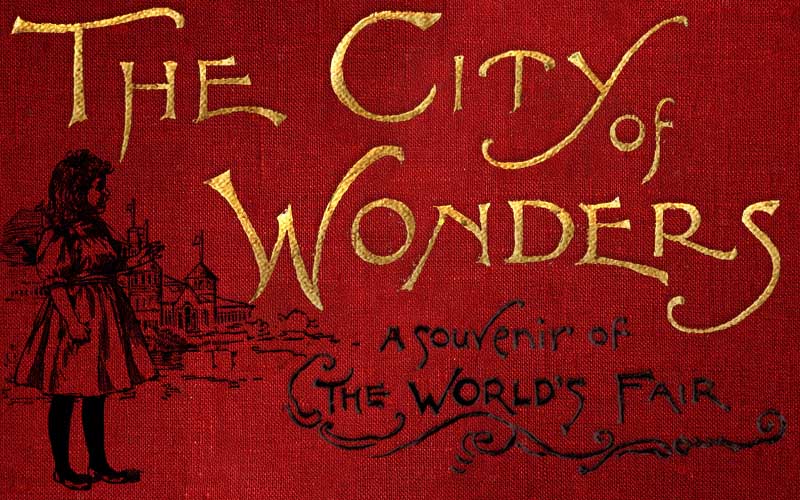

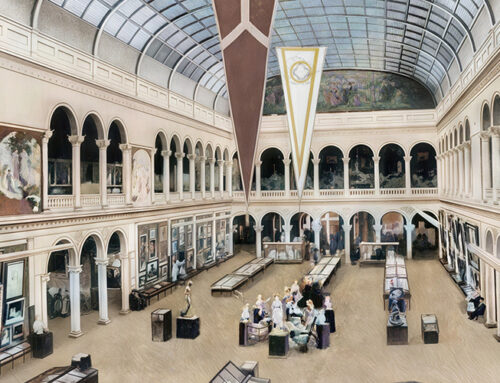
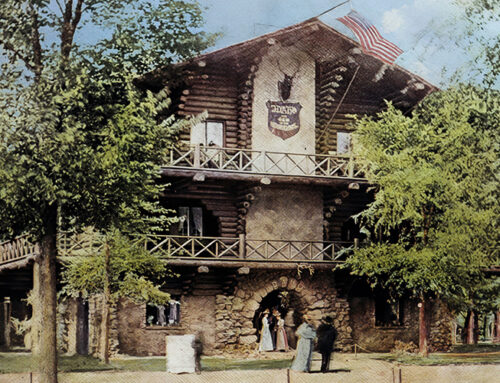
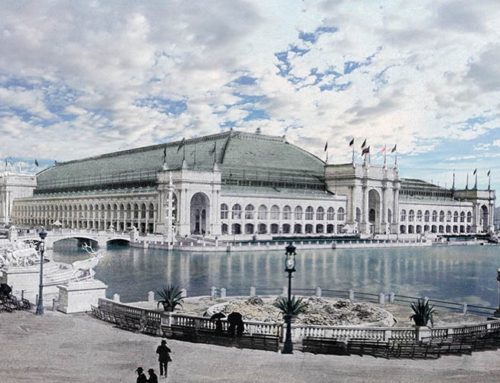
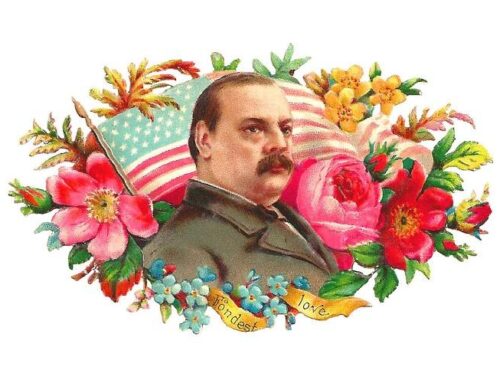
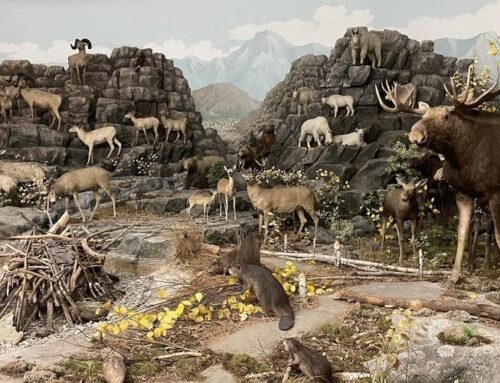
Leave A Comment